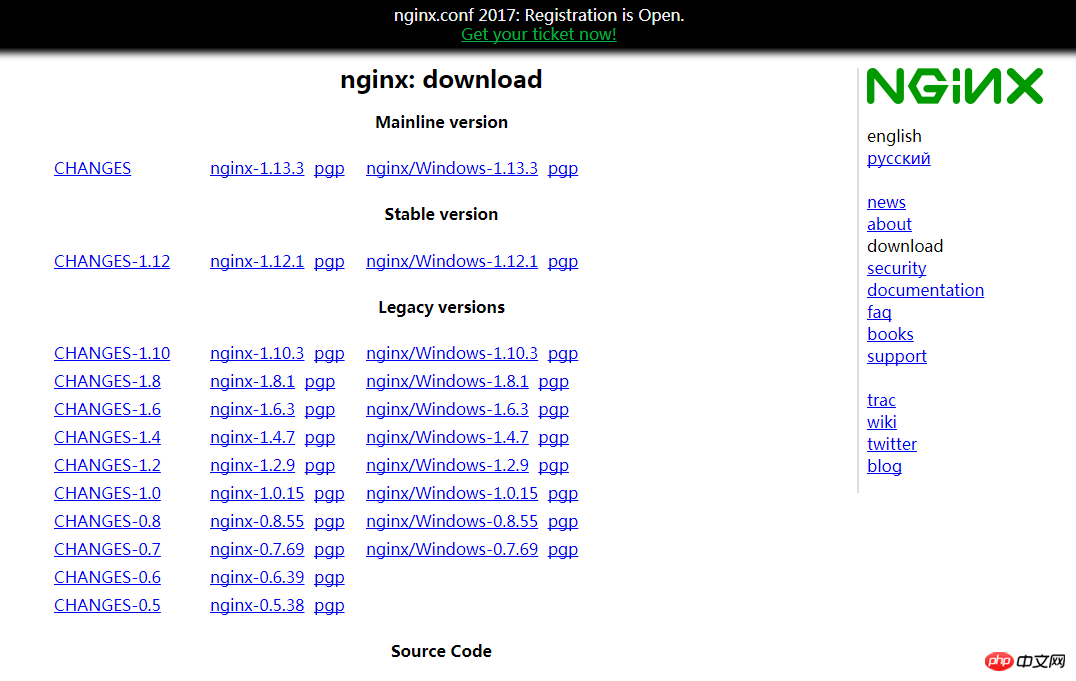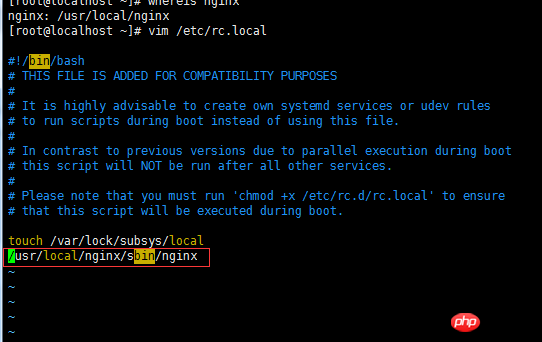
nginx is developed in C language and is recommended to be run on Linux. This tutorial uses Centos7 as the installation environment.
To install nginx, you need to compile the source code downloaded from the official website first. The compilation depends on the gcc environment. If there is no gcc environment, you need to install gcc: yum install gcc-c++
PCRE (Perl Compatible Regular Expressions) is a Perl library, including a perl-compatible regular expression library. The http module of nginx uses pcre to parse regular expressions, so the pcre library needs to be installed on Linux.
yum install -y pcre pcre-devel
Note: pcre-devel is a secondary development library developed using pcre. nginx also requires this library.
The zlib library provides many compression and decompression methods. nginx uses zlib to gzip the contents of the http package, so the zlib library needs to be installed on Linux.
yum install -y zlib zlib-devel
OpenSSL is a powerful Secure Sockets Layer cryptographic library, including major Cryptographic algorithms, commonly used key and certificate encapsulation management functions and SSL protocols, and provides a wealth of applications for testing or other purposes.
nginx not only supports http protocol, but also supports https (that is, transmitting http over ssl protocol), so you need to install the openssl library on Linux.
yum install -y openssl openssl-devel
Download .tar directly. gz installation package

tar -zxvf nginx-1.12.1.tar.gz cd nginx-1.12.1
Actually in nginx-1.10. In version 1, you don’t need to configure related things, the default is fine. Of course, it is also possible if you want to configure the directory yourself.
1. Use the default configuration (recommended)
./configure
2. Customize the configuration (not recommended)
Note: To specify the temporary file directory as /var/temp/nginx, you first need to create the temp and nginx directories under /var (/var/temp/nginx)
./configure \--prefix=/usr/local/nginx \--conf-path=/usr/local/nginx/conf/nginx.conf \--pid-path=/usr/local/nginx/conf/nginx.pid \--lock-path=/var/lock/nginx.lock \--error-log-path=/var/log/nginx/error.log \--http-log-path=/var/log/nginx/access.log \--with-http_gzip_static_module \--http-client-body-temp-path=/var/temp/nginx/client \--http-proxy-temp-path=/var/temp/nginx/proxy \--http-fastcgi-temp-path=/var/temp/nginx/fastcgi \--http-uwsgi-temp-path=/var/temp/nginx/uwsgi \--http-scgi-temp-path=/var/temp/nginx/scgi
3. Compile and install
make make install
After the compilation and installation are completed, you can view the installation path of nginx:
whereis nginx

4. Start and stop nginx
cd /usr/local/nginx/sbin/./nginx ./nginx -s stop ./nginx -s quit ./nginx -s reload ./nginx -s quit:此方式停止步骤是待nginx进程处理任务完毕进行停止。 ./nginx -s stop:此方式相当于先查出nginx进程id再使用kill命令强制杀掉进程。
5. Query nginx process
ps aux|grep nginx
Restart nginx
1. Stop and then start (recommended):
Restarting nginx is equivalent to stopping and then starting, that is, executing first Stop command and then execute start command. As follows:
./nginx -s quit ./nginx
2. Reload the configuration file:
When the nginx configuration file nginx.conf is modified, a restart is required for the configuration to take effect. nginx, use -s reload to make the configuration information effective in nginx without first stopping ngin Corresponding to the IP address of the machine (such as: 192.168.1.121), you can see a page like this:
2.4 Auto-start at boot
That is, in rc.local Just add the startup code. 
./nginx -s reload
Add a line to /usr/local/nginx/sbin/nginx

vim /etc/rc.local
The above is the detailed content of JAVA--Example of how to install Nginx server under CentOS. For more information, please follow other related articles on the PHP Chinese website!




